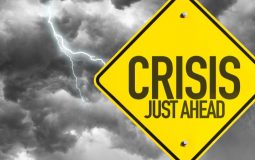
The right content.
The right channel.
The right time.
Content is king in today’s marketing environment. Content distribution and connecting with the right audience is now a major focus when it comes to the online advertising space. This idea is reflected in the industry’s shift from repurposing television advertising content for online purposes, towards a complete brand integration of content for online audiences. This concept was discussed by Emma Mackenzie in a recent article in a B&T publication. However, why did this shift occur?
Online platforms determine who your audience is and content expectations
Different audiences live on different platforms. Expectations of what content audiences demand per platform also change. For instance, an ad that features on a traditional television format will be viewed in a different way, especially with the advent of the multiple screen generation, in comparison to a Facebook ad, or a YouTube ad.
Viewer attention span on various social media formats have significantly lowered, with most research showing that brands have on average around seven to ten seconds to grab the attention of its audience. Whereas, how these adverts are consumed on non-traditional channels is also a factor. Traditional television is largely consumed in a living room. In contrast, online media can be consumed almost anywhere – in the bedroom, whilst commuting, on breaks and even in the bathroom are all high ranking.
Effectiveness of purpose of traditional television ads versus online ads
These days it is difficult to garner any sort of meaningful relationship with your audience on a traditional platform like television. The new media is an alternative to the rigid structure of time slots and the ritual waiting for an entire week to satiate your curiosity, within traditional medias. This is taking away from the channels ability to engage and captivate a viewer’s attention.
Unless your target audience are retired, or you have ungodly amount of money to burn, the efficacy of using television ads alone to communicate your brand message is absurd. In contrast, online ads can be targeted, timed, interactive, and designed to be engaging to a much greater degree.
Online ads can reach highly targeted audiences as they go about their day-to-day habituations online. A person is browsing YouTube, and what a coincidence, here is an ad that directly relates to the content you are viewing. Not only that, but a clear call to action is just one click away. Browsing Facebook, wow, here is a short, attention grabbing ad that relates to the content you are already scrolling through and interacting with.
A brand’s power to reach its audience through these online platforms is huge, and therefore, the content that is created for these channels need to be differentiated and respected.
Evidence of this shift
The shift towards these non-traditional, online media sources is rapidly taking pace, and can be viewed through two lenses. Firstly, from the lens of audiences and content consumers themselves. Online content viewing is trending compared to traditional television viewing. Broken down demographically, the trend is exponential. As the audience becomes younger, the trend towards online media become steeper and steeper. As such, online is now the preferred source of media for most content consumers. Secondly, this trend can be viewed through the lens of advertisers and brands themselves. The growth of the online shift can be seen through the trend of advertising expenditure, which is growing at a much faster rate than television advertising expenditure.
Conclusion
In the future, expect more tailored and integrated online video content from your favourite brands. Online advertising is pivotal for brands in today’s marketing environment, as it gives even the smallest brand the greatest ever power to reach their audiences online. As John Filippis from MediaMath’s states:
“Video is powerful tool for increasing brand awareness and tells a meaningful, multi-sensory story that resonated deeply with consumers. It also operates successfully as part of an integrated campaign, combing digital channels such as displays, social media and mobile to create a seamless brand message – which is critical for marketers looking to maximise their presence across all media channels.”
Additional sources for further research:
John DeFilippis articles
Sensis Social Media Report 2017
The State of Traditional TV
















 Often fraudsters are driven by pressure; this can include the need to hold up an ailing business, personal relationships, gambling habits, extravagant lifestyles and other emotional circumstances or addictive traits.
Often fraudsters are driven by pressure; this can include the need to hold up an ailing business, personal relationships, gambling habits, extravagant lifestyles and other emotional circumstances or addictive traits.